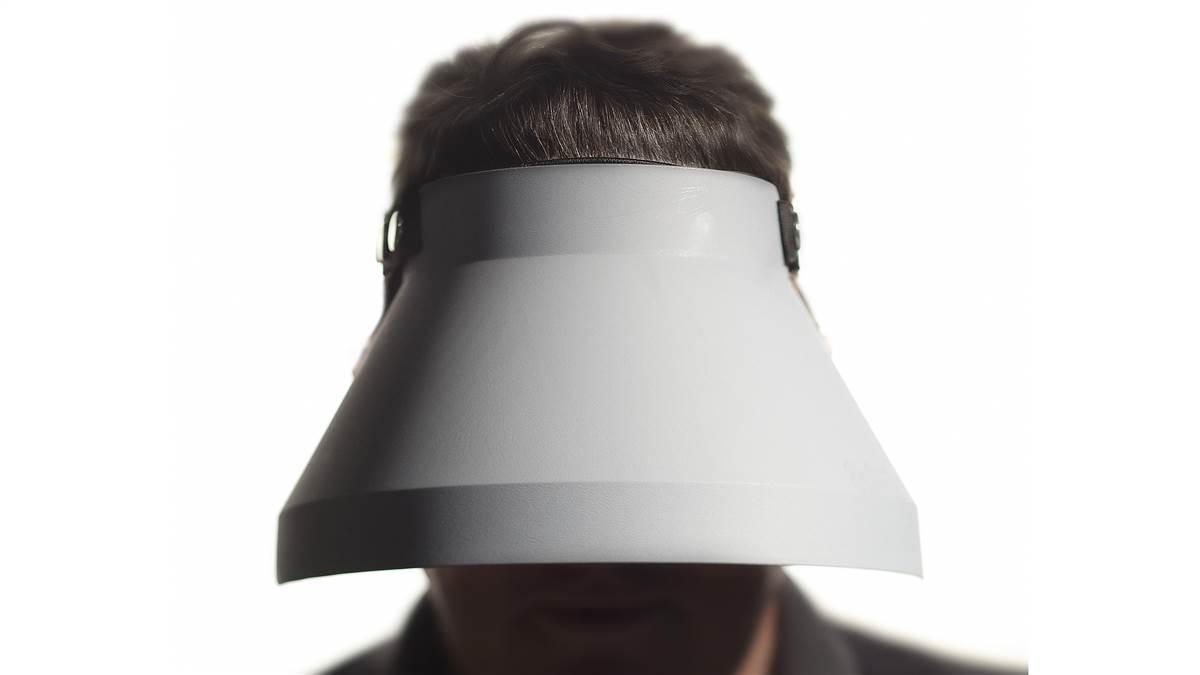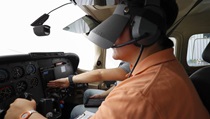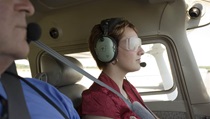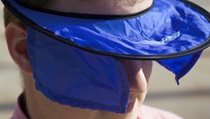What am I? View-limiting device
Training to rely on what you see, not feel

It’s your introduction to the big world of instrument flying, and the almost incomprehensible fact that you can keep an airplane flying straight and level by relying only on instruments.
It wouldn’t be safe to embark on this training by taking a student pilot into instrument meteorological conditions in an actual airplane right away. (If you have a simulator, though, go for it.) So we must fly the airplane in visual meteorological conditions but trick our brains into thinking we can’t see anything except the instrument panel. To do this, a student pilot wears a view-limiting device. Whether it’s a hood or an outsize pair of glasses, the device is intended to block peripheral and forward vision such that your gaze should be focused on the instruments and you can employ your instrument scan without distraction. You’ll fly the airplane while your instructor teaches you how to fly by referring only to the instruments.
Are view-limiting devices 100 percent effective? Not exactly. It’s fairly easy to peek under or tilt your head back enough to get a visual boost, but if you do that you’re only cheating yourself. And, no matter how effective you think a view-limiting device is, it’s nothing compared to the first time you enter a cloud. So consider asking your flight instructor to file an instrument flight plan and take you into the clouds so you can see the difference.

 The hood: Favored by many pilots, especially those who wear corrective lenses; the hood fits over the head like an outsized visor.
The hood: Favored by many pilots, especially those who wear corrective lenses; the hood fits over the head like an outsized visor.  Glasses: Foggles is a catch-all term for these devices, which resemble large sunglasses and employ darkened or “fogged” lenses that obstruct forward and peripheral vision.
Glasses: Foggles is a catch-all term for these devices, which resemble large sunglasses and employ darkened or “fogged” lenses that obstruct forward and peripheral vision. The variant: Aviation equipment manufacturers are always coming up with new spins on view limiting devices. This one's called the Hoodwink, which resembled a visor with curtains hanging from the sides; it appears not to have been a bestseller.
The variant: Aviation equipment manufacturers are always coming up with new spins on view limiting devices. This one's called the Hoodwink, which resembled a visor with curtains hanging from the sides; it appears not to have been a bestseller. 

